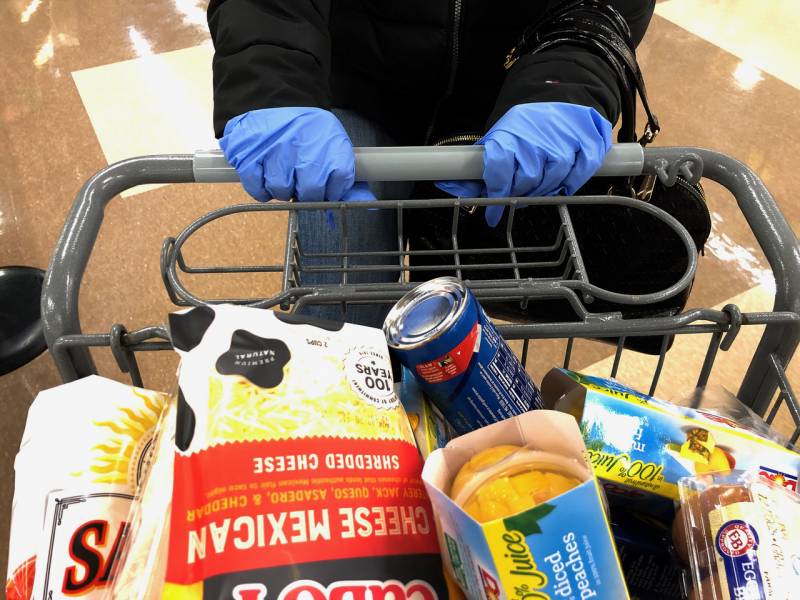Unless, of course, you touch something where a contaminated droplet has landed. “The hands and the fingers are sort of like transportation. It’s like the Muni of the virus, a free trip to the nose or mouth.”
While gloves can provide a barrier to the coronavirus, if you touch your face, you can still become infected.
And even if you follow that rule, gloves have their limits. “Don’t use gloves and think it’s a force shield,” Chin-Hong said. “The glove isn’t going to protect you from getting infected when the main source of infection is someone’s cough or sneezing.”
Wearing gloves properly during this pandemic can turn out to be kind of a hassle, he says. “It’s actually much easier to wash your hands than to wear gloves on and off.”
Still, Chin-Hong says gloves are a good strategy if used in combination with other preventive measures. The best thing people can do to protect themselves is to follow public health guidelines: Avoid touching your face, wash your hands regularly, and stay at least six feet away from other people.
If you do wear gloves, there are some extra rules to follow:
- Always wash your hands before and after wearing gloves.
- Clean any surface you might have touched with your gloves on, such as your phone, keys, wallet, eyewear or door handles.
- Throw away used disposable gloves, and wash fabric gloves with soap and water before using them again.
- Be careful to avoid contamination when taking gloves off.
- Again, even with gloves on, don’t touch your face, especially your nose or mouth.
Proper glove removal can actually be a bit tricky and may take some practice. In general, the key is to avoid touching the inside of a glove or your bare hand with the outside of a dirty glove. The Centers for Disease Control and Prevention has published this diagram, with step by step instructions on how to remove gloves safely.
Whether people choose to wear gloves or not, Chin-Hong says, following public health guidelines is just as important as ever. “I think it’s really important to sustain all these wonderful efforts that we’ve been doing as a community and not to lose sight of the fact that we’re all in this together. Every member of the community has a responsibility to protect each other.”
